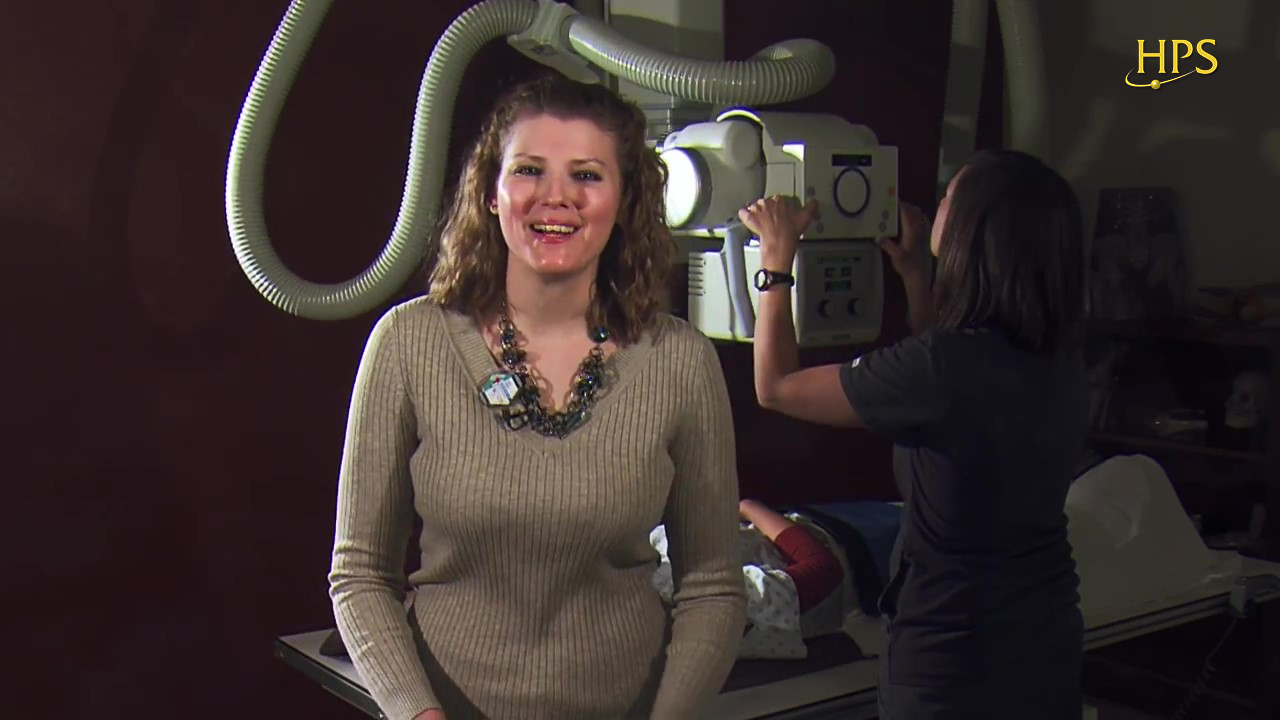The Profession
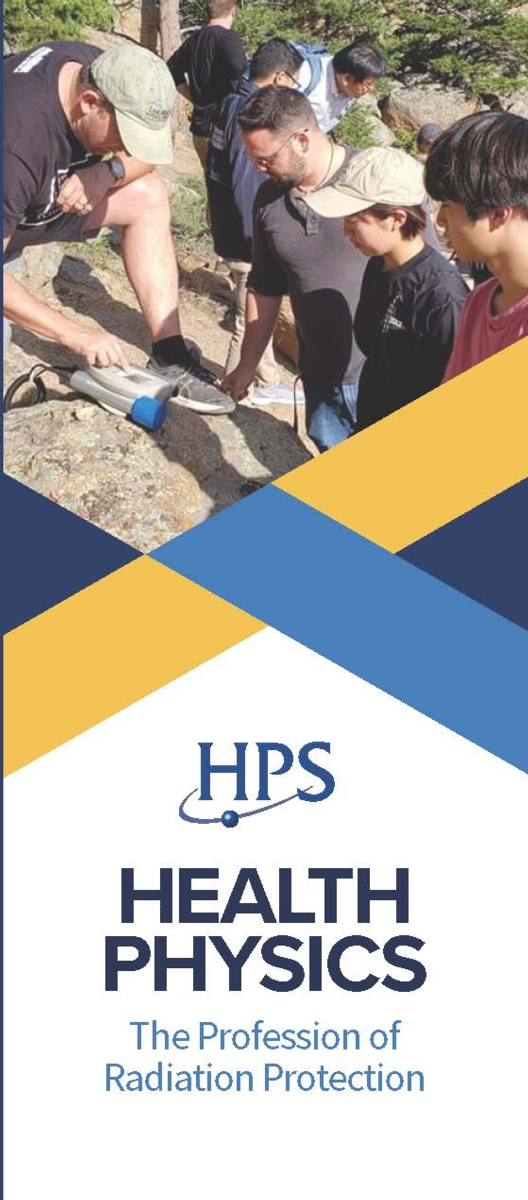 For decades, radiation has been beneficial to humans, from treating cancer to generating electrical power. But when used in large quantity or in an unsafe way, radiation can harm living organisms. Care must be taken with nuclear reactors, nuclear weapons, high-energy particle accelerators, x-ray machines, and radionuclides used in biomedical research and therapy. This special attention helps minimize the potential for unnecessary irradiation of individuals or environmental contamination.
For decades, radiation has been beneficial to humans, from treating cancer to generating electrical power. But when used in large quantity or in an unsafe way, radiation can harm living organisms. Care must be taken with nuclear reactors, nuclear weapons, high-energy particle accelerators, x-ray machines, and radionuclides used in biomedical research and therapy. This special attention helps minimize the potential for unnecessary irradiation of individuals or environmental contamination.
Many industries, medical facilities, defense plants, and research laboratories demand professionals who understand radiation hazards and their prevention and control. Prominent among scientists is the health physicist, who controls the beneficial use of radiation while protecting workers and the public from potential hazards. The health physics profession is diverse and one of the most interesting and rewarding fields of scientific endeavor.
Download a brochure on health physics.
Click the image below to view the Health Physics Careers video.
The slide presentation Careers in Health Physics is available for use in giving talks and workshops.
A Century Ago . . .
Within months after Wilhelm Roentgen discovered x rays in 1895, three men experimenting with the x-ray tube noticed skin irritations. Within a year, these newly discovered rays were used for both diagnosis and limited therapy.
The first noted injuries from radiation exposure came before the beginning of the 20th century. The only practical method of measuring the intensity of radiation at that time was by noting the degree of brightness induced in a fluorescent screen. In these early days, a popular method of specifying radiation dose was to note the time required to make an x-ray image of an individual’s hand.
The British and American Radiological Societies in 1915 published codes of empirical rules for protection from radiation. In 1925, an American made the first experimental dose determination with a crude but reliable ionization chamber. He measured the monthly amount of x-ray exposure of individuals who had not experienced problems with radiation burns. He then took 1% of this amount as a guide for limiting dose associated with minimal chances of injury over a 30-day period. The criteria used for injury was a reddening of the skin, or “erythema dose.”
With the increased use of x rays and radium, the US National Council on Radiation Protection and Measurements (NCRP) and the International Commission on Radiological Protection (ICRP) were established. They were charged with the principal responsibility of originating and shaping the concepts and theory of radiation protection.
After the Manhattan Project began producing fissionable material in 1942, many new sources and levels of radiation hazards began to change public attitudes toward radiation protection. Prior to this time, research scientists were primarily concerned with protecting themselves and their coworkers. With testing associated with the atomic bomb for national defense, these concerns were extended to protecting the general public and the environment.
In 1942, a group of physicists working with the first nuclear reactor became concerned with the health of project workers and the general public. As a result, they took on the responsibilities of coping with radiation hazards never before encountered. These physicists were called health physicists, and the profession known as health physics came into existence.
What Is Health Physics?
Health physics, also referred to as the science of radiation protection, is the profession devoted to protecting people and their environment from potential radiation hazards, while making it possible to enjoy the beneficial uses of radiation.
Radiation control incorporates an understanding of many disciplines. It has common scientific interests with many areas of specialization: physics, biology, biophysics, engineering (nuclear, civil, mechanical, or electrical), chemistry, genetics, ecology, environmental sciences, metallurgy, medicine, physiology, and toxicology. The wide spectrum of knowledge required of the health physicist makes this profession both challenging and rewarding.
What Do Health Physicists Do?
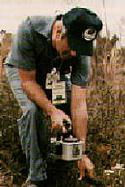 Health physicists work in a variety of disciplines, including research, industry, education, environmental protection, and enforcement of government regulations. Although the health physicist usually concentrates in one of these disciplines, a professional health physicist typically performs duties in several areas.
Health physicists work in a variety of disciplines, including research, industry, education, environmental protection, and enforcement of government regulations. Although the health physicist usually concentrates in one of these disciplines, a professional health physicist typically performs duties in several areas.
In research, health physicists investigate principles by which radiation interacts with matter and living systems. Health physicists also study environmental levels of radioactivity and the effects of radiation on biological systems on earth and in space. This information is used in many ways, ranging from designing radiation detection instrumentation to establishing radiation protection standards.
Industrial or applied health physicists draw upon their technical knowledge and varied experience to advise and make recommendations to management regarding methods and equipment for use in radiation work. The health physicist also assists engineers and scientists in designing facilities and new radiation control programs. As the primary consultant during any radiation emergency, a health physicist commonly has total control of the involved area.
Health physicists working in education develop and instruct training programs for future health physicists. They also provide any necessary training for radiation workers and the general public. These individuals instruct workers and other health physicists on the level of risk associated with particular radiation sources and methods used to reduce risk. One goal is to help individuals understand the relative degree of risk of radiation exposure. In most cases, the risk is no greater than that found in other industries.
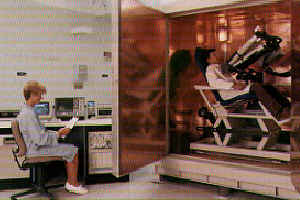 Health physicists who work in regulatory enforcement must have knowledge and experience concerning all types of radiation hazards in order to establish guidelines for adequate radiation control. These guidelines help society receive the greatest benefits from radiation sources at the lowest possible exposure.
Health physicists who work in regulatory enforcement must have knowledge and experience concerning all types of radiation hazards in order to establish guidelines for adequate radiation control. These guidelines help society receive the greatest benefits from radiation sources at the lowest possible exposure.
Power Reactor Health Physicists
A power reactor health physicist is responsible for all phases of radiation protection at a reactor site. Selecting, purchasing, and maintaining radiation protection, laboratory, and detection equipment are some of the responsibilities. Nuclear power plant workers require extensive training, while plant process systems require detailed study. The power reactor health physicist must be ready to respond quickly and with expertise in the unlikely event of a radiation accident. Health physicists are trained to make assessments of the potential environmental impact and to ensure that the facility complies with federal regulations. Procedures must be prepared and updated, while safety standards and emergency plans must be written and preparedness drills conducted.
The power reactor health physicist may be assigned multiple responsibilities, such as administering the plant chemistry and radiation safety programs. Personnel requirements for each reactor site differ and depend on the specific needs of each facility. It is common for a power reactor health physicist to supervise as many as 70 to 80 technicians and professionals, such as chemists and radiochemists.
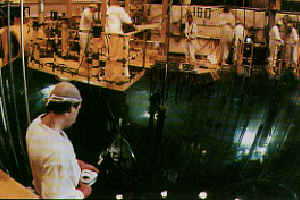 The daily work of a health physicist may involve reviewing all radiological monitoring data for as many as 2,000 permanent site employees. Area radiological surveys, radiation records, and internal and external dosimetry information must be reviewed. In addition, survey and laboratory results are analyzed to ensure the reactor is operating within prescribed limits.
The daily work of a health physicist may involve reviewing all radiological monitoring data for as many as 2,000 permanent site employees. Area radiological surveys, radiation records, and internal and external dosimetry information must be reviewed. In addition, survey and laboratory results are analyzed to ensure the reactor is operating within prescribed limits.
Although the power reactor health physicist’s career is multifaceted, it is nonetheless satisfying and rewarding. Read about careers in industry.
Medical Health Physicists
The responsibilities of a medical health physicist are broad and ever challenging. These individuals work wherever radiation sources are used to diagnose and treat human diseases. Hospitals, clinics, and major medical centers use radiation sources, including x-ray machines, particle accelerators, lasers, and many types of radioactive materials. Medical health physicists are needed to ensure proper and safe working conditions for both patients and medical staff.
Medical health physicists find a variety of professional challenges as more applications in medicine develop each year. Radiology, nuclear medicine, and radiation therapy departments are found in almost every modern hospital today. Each of these departments utilizes radiation sources, and medical health physicists are employed to assure their safe use.
A medical health physicist often serves as the designated radiation safety officer (RSO) for a medical facility. The RSO is responsible for performing radiation safety surveys of all radiation sources used within the facility; monitoring radiation exposure of workers, patients, and visitors to the facility; establishing and monitoring radiation safety procedures; and assuring the medical facility is in compliance with state and federal radiation safety regulations. The medical health physicist may evaluate and make recommendations regarding the potential hazards of nonionizing radiation such as microwaves and laser beams.
 The medical health physicist contributes professionally by teaching courses in radiation physics and biology and by reviewing research projects involving radiation work of various scientific disciplines. Through personal supervision of radiation installations in hospitals and clinics, the health physicist seeks to obtain the maximum benefits with minimum risks of radiation exposure.
The medical health physicist contributes professionally by teaching courses in radiation physics and biology and by reviewing research projects involving radiation work of various scientific disciplines. Through personal supervision of radiation installations in hospitals and clinics, the health physicist seeks to obtain the maximum benefits with minimum risks of radiation exposure.
Educational requirements for medical physicists range from an associate’s degree to a PhD in health physics or a closely related field. Individuals working in a medical radiation safety office may need an associate’s or baccalaureate degree. The RSO for such a facility most likely has a master’s degree or PhD. Special course work also may be required, depending on the individual’s job responsibilities. Read about careers in the medical field.
Military Health Physicists
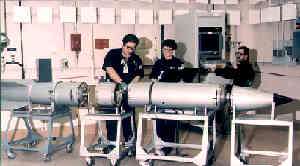 A career with the US Armed Services as a health physicist may take one of two paths. First is a career as a commissioned officer in the military. The second path is as a civilian employee in the Department of Defense. As a military health physicist, your duties will be similar to those of other health physicists in that you could work in a health care setting, in an industrial setting, often as a radiation safety officer, or even developing policy and regulations. There are some opportunities unique to the military, such as duty at sea on a nuclear-powered surface ship or in a nuclear submarine. Read about careers in the military.
A career with the US Armed Services as a health physicist may take one of two paths. First is a career as a commissioned officer in the military. The second path is as a civilian employee in the Department of Defense. As a military health physicist, your duties will be similar to those of other health physicists in that you could work in a health care setting, in an industrial setting, often as a radiation safety officer, or even developing policy and regulations. There are some opportunities unique to the military, such as duty at sea on a nuclear-powered surface ship or in a nuclear submarine. Read about careers in the military.
Health Physicists in Regulatory Enforcement and Occupational Safety
Whether it be nuclear power, medical uses, industry, environmental restoration, waste management, or educational uses of radioactive materials, there are rules and regulations that guide and provide a margin of safety. There are many occupational opportunities for health physicists in regulatory and occupational safety sectors.
Health physicists working in these areas establish the future rules and regulations regarding the manufacture, use, and disposal of radioactive material. They also ensure current safety requirements are properly implemented. Occupational safety aspects include work with power companies, manufacturers, colleges, universities, and many other private-sector employers.
Depending on the responsibilities, educational requirements range from an associate’s degree to a PhD in health physics or a closely related field. Future employment opportunities in regulatory and occupational safety are numerous nationwide. Read about careers in the government.
Health Physicists in Education
If you are looking for a career in education, health physics offers a variety of opportunities. Upon completing a master’s degree or PhD in health physics (or related fields, such as physics, industrial hygiene, environmental science, etc.), teaching opportunities exist within many programs in the United States. These programs offer health physics degrees at the associate’s, bachelor’s, master’s, and PhD levels.
Educators develop course work appropriate for the specific goals of their students. Health physicists in education may be found in both college and university classrooms and laboratories, as well as at off-campus training sites where they supervise student instruction. Educators typically conduct their own health physics research projects, often with the assistance of their students. Research findings are typically published in professional journals. Read about careers in education.
Environmental Health Physicists
The environmental health physicist is the professional most closely associated with protecting the public and environment from unnecessary exposure to man-made and technologically enhanced natural radioactivity. One important aspect is the environmental surveillance for radioactivity, which involves many types of instrumentation and field-sampling technologies.
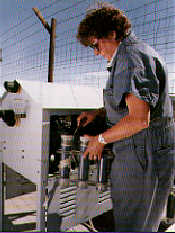
Many environmental health physicists are employed in low-level, radioanalytical laboratories. Instrument design, radiochemical technique development, and quality assurance are skills needed as increasingly lower levels of detection are demanded. Another responsibility is assessing the environmental impact of released radionuclides using environmental transport models. These calculations involve the use of atmospheric dispersion models, biological uptake and transfer coefficients, and dose-conversion factors.
Decontamination and decommissioning (D&D) is an area demanding environmental health physicists. Those working in this area must have expertise in radiation surveys, pathway analyses, and laboratory analyses. They must also make critical decisions regarding decontamination levels necessary for the unrestricted release of radionuclides in former military and research facilities.
Natural radioactivity can sometimes become hazardous to workers and the public. Concentrations of radium scales in the petrochemical and phosphate (fertilizer) industries are examples. Some groundwater sources contain high levels of radon and radium, which require protection of the public from higher radiation exposures. And radon, of course, is the most well-publicized of the natural radioactive hazards. Radon in homes has created work in the areas of instrumentation, testing protocols, analysis, radioepidemiology, mitigation, preconstruction evaluations, and regulation/guideline development. Read about careers in environmental health physics.
How Do I Become a Health Physicist?
Because health physicists have responsible technical positions in several disciplines, you will need a broad background of education and experience. A basic education in the physical sciences is necessary, but training is also required in other areas.
Challenging research problems await the health physicist. In searching for the answer to “What is a permissible dose of radiation and how can it be measured reliably?” you must be familiar with radiation biology, physiology, biochemistry, and genetics and have a working knowledge of radiation dosimetry.
Knowledge of air- and water-sampling techniques and methods of analysis are essential in detecting and determining concentrations of radionuclides in air and water. Training in electronics is required for an operational understanding of radiation detection instruments. Familiarity with medical uses of radiation is essential for the medical health physicist. And the health physicist working in a regulatory agency needs to be familiar with industrial, power production, and medical applications of radiation. Specialization in any of these disciplines may be essential to study a pertinent radiation research problem.
Academic programs in health physics, leading to baccalaureate and advanced degrees, are now offered in many American universities. These comprehensive programs will allow you to specialize in areas such as nuclear engineering, physics, biophysics, medical physics, or radiation biology.
Training for health physics technicians is available from several programs. These schools offer two-year associate’s degrees.
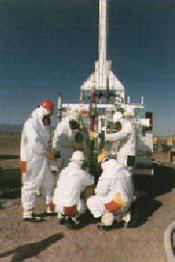 Academic training alone will not make a health physicist. Practical experience in applying radiation protection principles is essential. To provide hands-on, real-life experience, cooperative programs are offered at many universities in collaboration with national laboratories and utilities.
Academic training alone will not make a health physicist. Practical experience in applying radiation protection principles is essential. To provide hands-on, real-life experience, cooperative programs are offered at many universities in collaboration with national laboratories and utilities.
If you desire national recognition as a health physics professional, you may seek certification at either of two educational and experience levels. Certification may be obtained from the American Board of Health Physics (ABHP) and, for technicians, through the National Registry of Radiation Protection Technologists (NRRPT).
Salary Information
Click here for information on the current and historical HPS and CHP salary surveys. The salary surveys are conducted each year by the American Academy of Health Physics.
Most of the information on this page was prepared by the Alabama Health Physics Society, with appreciation extended to the Midwest Chapter of the Health Physics Society, the Academic Education Committee, Tennessee Valley Authority-Browns Ferry, the US Environmental Protection Agency, the US Department of Energy-Hanford, the University of Alabama-Birmingham, Canberra Nuclear Products Group, New York Power Authority, and Chem-Nuclear Systems, Inc.







